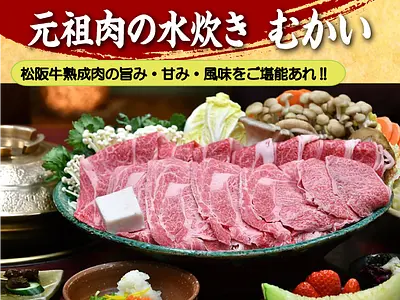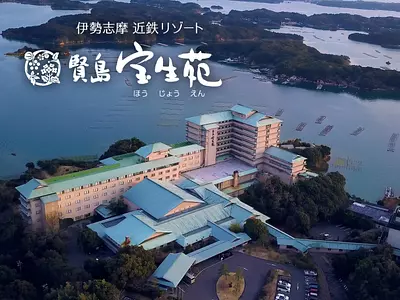SENJUJIHeadTempleoftheShinshuTakadaSchool has become a national treasure! This is the first building in Mie Prefecture. Introducing goshuin stamps, access, and attractions♪
掲載日:2017.10.20
“Miei-do” and “Nyorai-do” at SENJUJIHeadTempleoftheShinshuTakadaSchool in Tsu TsuCity, Mie Prefecture have become the first national treasures in the prefecture! The vast precincts, which are about twice the size of Tokyo Dome, are home to various historical buildings, and the largest of them, Mieido, is a magnificent wooden structure that ranks among the top five temple buildings in Japan during the Edo period. thing. Also, the palace, which is gorgeously decorated with gold leaf, is a must-see! We will provide a detailed report on what kind of temple Takada Honzan, which has become a national treasure, is. We also post stamps and access information.
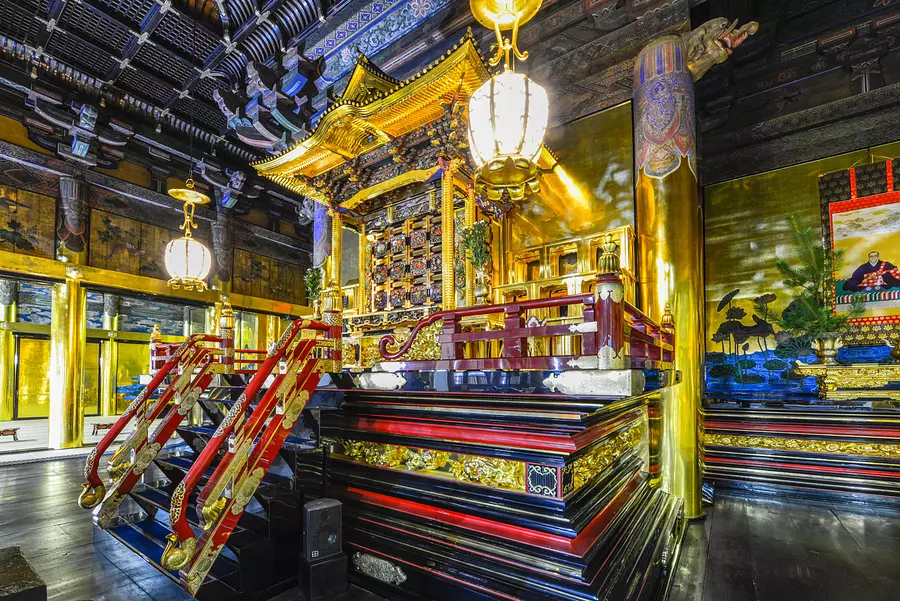
Two buildings, Mieido and Nyoraido, of Takada SENJUJIHeadTempleoftheShinshuTakadaSchool in TsuCity Mie Prefecture have been designated as national treasures!
(At the Council for Cultural Affairs held on October 20, 2017, the Minister of Education, Culture, Sports, Science and Technology reported on the designation as a national treasure.Thereafter, on November 28, 2017, the Ministry of Education, Culture, Sports, Science and Technology Notification No. 170 It has been designated as a national treasure under No. 6.For more information, please see the announcement from Mie Tourism.)
A press release from the Agency for Cultural Affairs states, ``It has created a magnificent space of worship through advanced architectural techniques and outstanding decorative techniques, and has extremely high value as a modern temple architecture representative of Japan. ” is written.
As it is Mie Prefecture's first national treasure as a building, we will introduce you to the charm of SENJUJIHeadTempleoftheShinshuTakadaSchool which is in a celebratory mood!
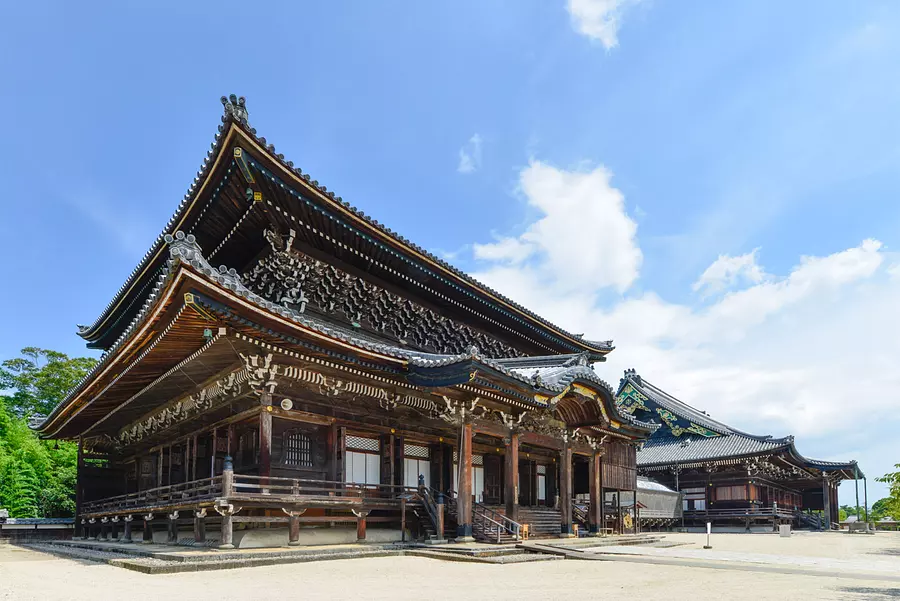
Takada Honzan Senshuji is the head temple of the Takada sect of Shinshu, which is one of the ten sects of the Jodo Shinshu sect that inherits the teachings of Shinran Shonin, and there are over 600 Shinshu Takada sects nationwide. Officially it is called ``Shinshu Takada-ha Honzan Senshuji,'' but it is affectionately known as ``Takada Honzan.''
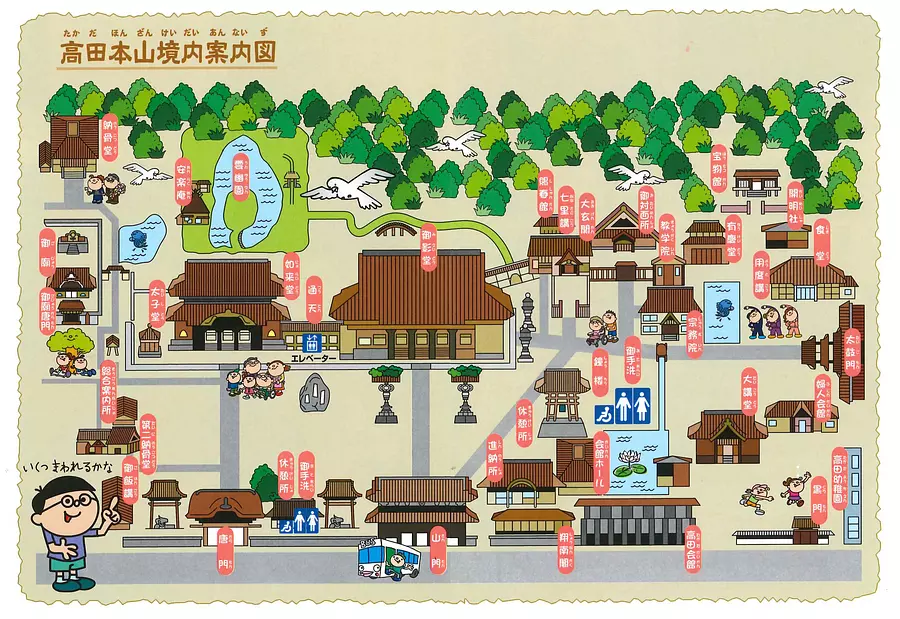
The location is located in the center of Ichimida-cho, TsuCity City, central isshinden Prefecture, on the grounds of approximately 30,000 tsubo (approximately twice the size of Tokyo Dome!), which is a national historic site, in addition to two buildings that are national treasures. It is a huge temple that houses 11 buildings that are nationally designated important cultural properties.
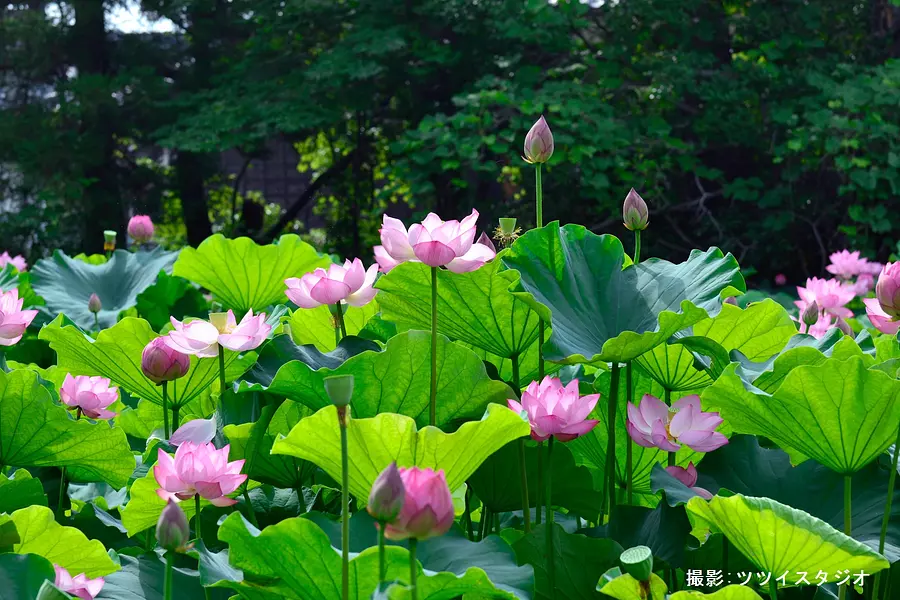
It is also famous as a lotus temple, and you can enjoy a beautiful lotus pond and various kinds of lotuses throughout the temple grounds.
Rising dignifiedly from the surface of the water, its noble appearance with its large blooming flowers is a symbol of purity and cleanses the soul.
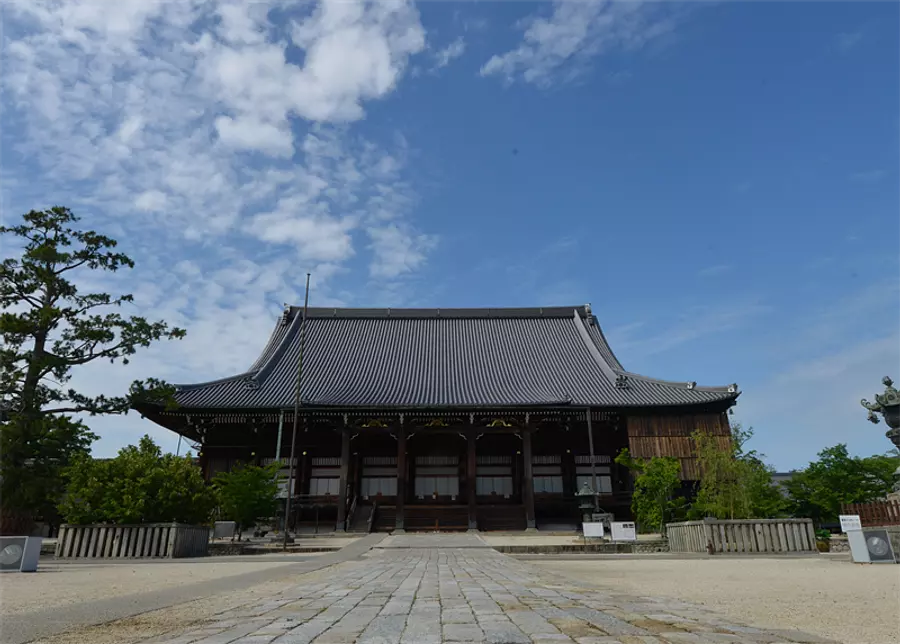
Now, let's take a closer look at the wooden buildings that are national treasures.
What you will find in front of you after passing through the Sanmon gate is the Mieido Hall, which is designated as a national treasure. It was built in 1666 (Kanbun 6).
It is the largest building of SENJUJIHeadTempleoftheShinshuTakadaSchool, with its calm and pure Japanese style, with a gabled structure and tile roof. .6m).
It's bigger than Zenkoji Temple in Nagano Prefecture!
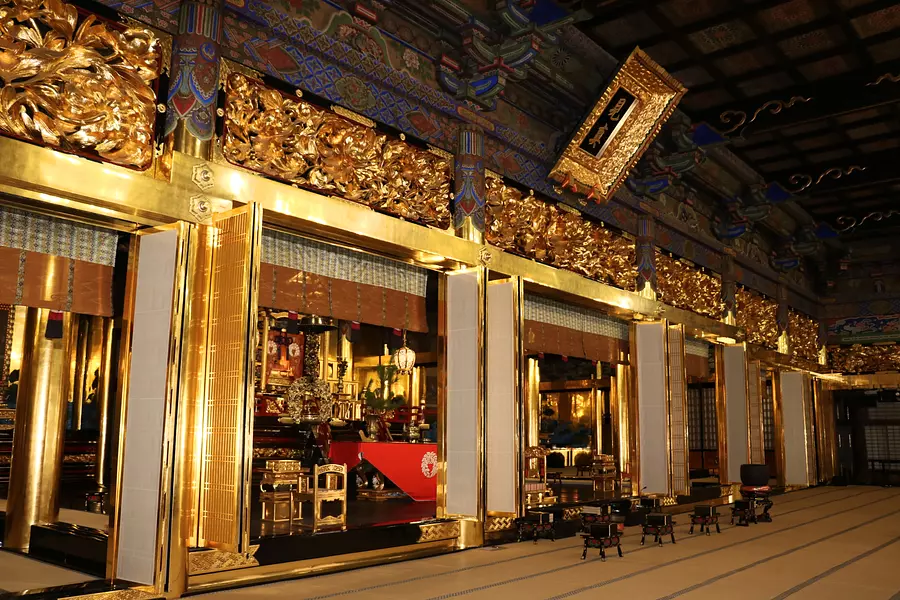
When you enter Mieido, you will find yourself in a 780 tatami-mat space with tatami flooring, and the large pillars wrapped in gold brocade and the colorful ceiling paintings create a majestic atmosphere.
The pillars that support the roof are effectively placed to ensure a large space, while the colorful decorations create a magnificent space for worship.
The wooden statue of Shinran, the founder of the sect, is enshrined in a palace known for its ornate design decorated with gold leaf and richly colored carvings. With the palace in the center, the shadows of successive priests are enshrined on both side platforms and on both sides.
This palace and the ``shishiguchi,'' which were placed in the main ridge when it was first built, are designated as ``tsuketari.''
Overwhelmed by the brilliance of the temple! It's so easy to forget the passage of time.
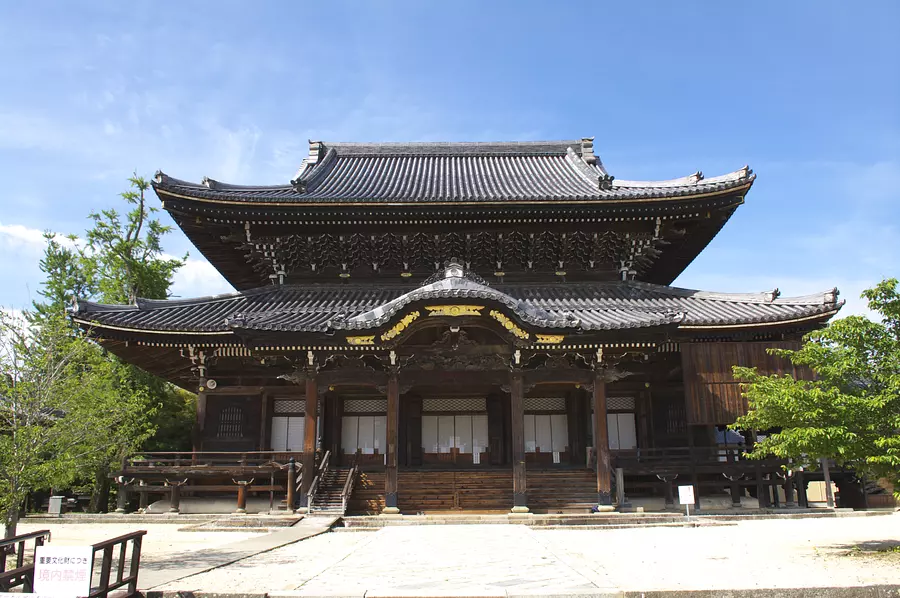
Another national treasure, Nyorai-do, is located on the west side of Miei-do and is a hall that enshrines the statue of Amida Nyorai. It was built in 1748.
The exterior of the building is in the Chinese style, with gables decorated with paulownia crests, and it is an ornate structure with beautiful kumimono and many carvings based on Chinese folklore, such as elephants, dragons, and bakus.
The size of Nyorai-do Hall is 25.7m in rows x 26.6m in beams. It is smaller than Mieido, but by making the heights the same, you won't notice the difference in size.
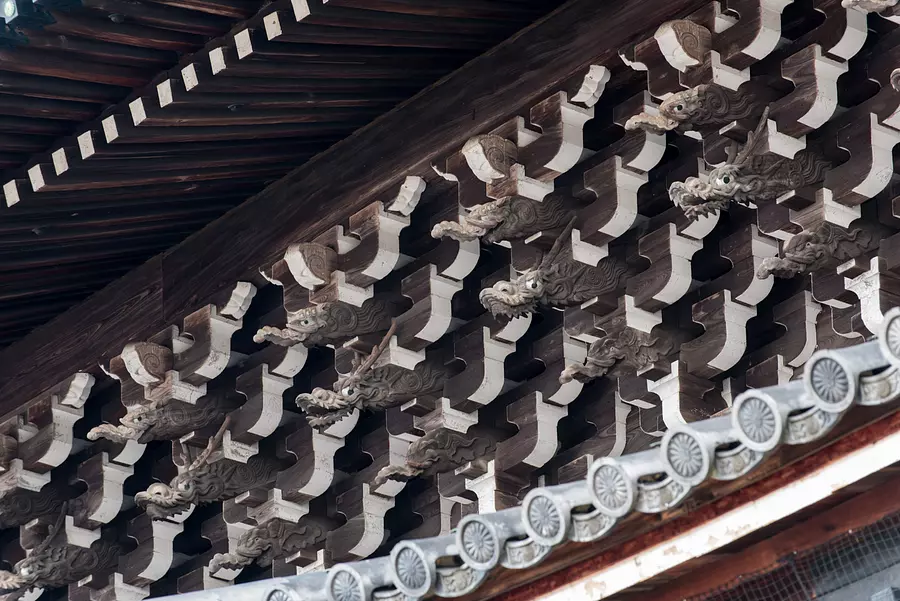
Here's what I want you to pay attention to. You will be surprised by the gorgeous carvings on the soffit! Please take a close look.
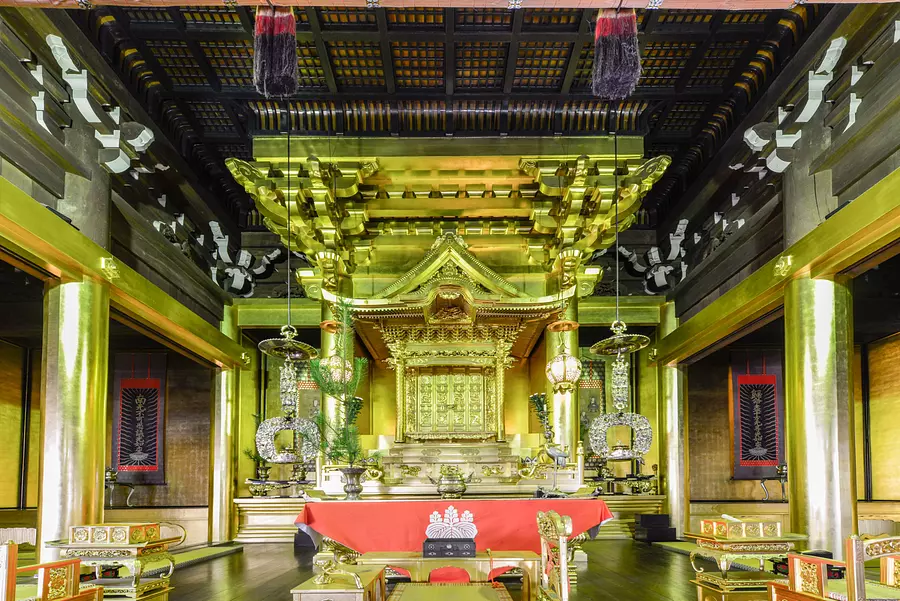
The inside of the Nyorai-do hall is a majestic space decorated with intricately carved pieces, transoms, and gorgeous gold leaf. )” is symbolic.
It had a calm and dignified atmosphere that was different from Mieido, which made me feel very comfortable.
In addition, there is the ``Nyorai-do Go-erenroku'', which is a record of the time when branch temples and followers collected funds to build the Nyorai-do, and the ``Gohonzan Amida-do Gojo-mune Ceremony Gojo'', which is a record of the offerings made at the time of the construction ceremony. Two ancient documents called "Things" are designated as appendixes along with the palace.
By the way, there is no admission fee for both ``Miei-do'' and ``Nyorai-do'' and you can go inside the temple from 6:00 when the gates open until 3:30 pm when they close.
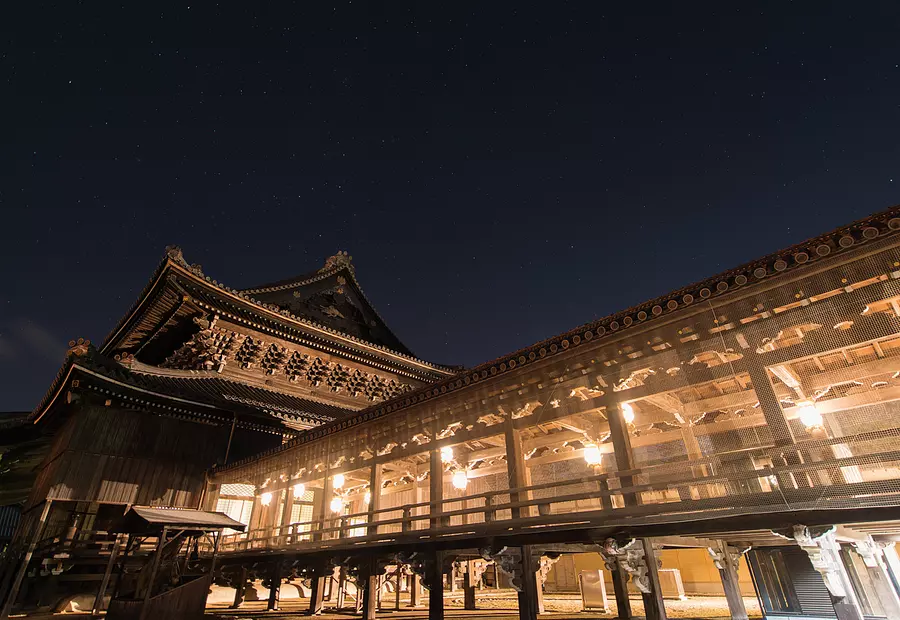
Miei-do and Nyorai-do are connected by a corridor called ``Tsutenkyo'', which has a raised floor made of wood and has an open ceiling between the pillars.
This is also a popular photo spot, and the view at night with the lights on is especially magical. (Only during the Seven Nights period)
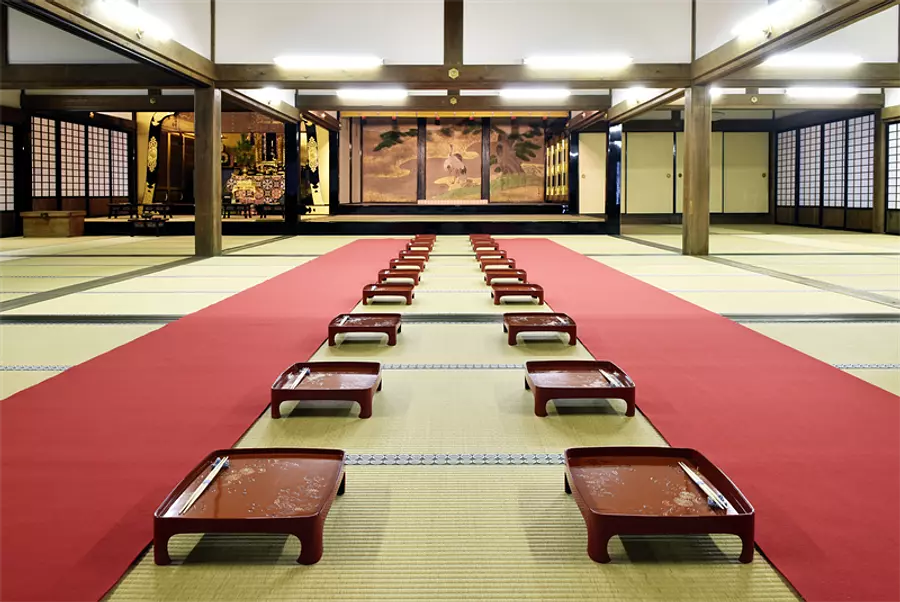
In addition to the buildings, SENJUJIHeadTempleoftheShinshuTakadaSchool also houses a number of important cultural properties, including the Sanjo Wasan and Saigata Shinansho, which are designated as national treasures, but many of them are not normally open to the public. there is.
However, several times a year, you will have the chance to enjoy a kaiseki meal at Otaimensho, which is one of the nationally designated important cultural properties, and have a special opportunity to view other important cultural properties that are not open to the public. Please see the following report article for more information: You will be able to enjoy a special moment.
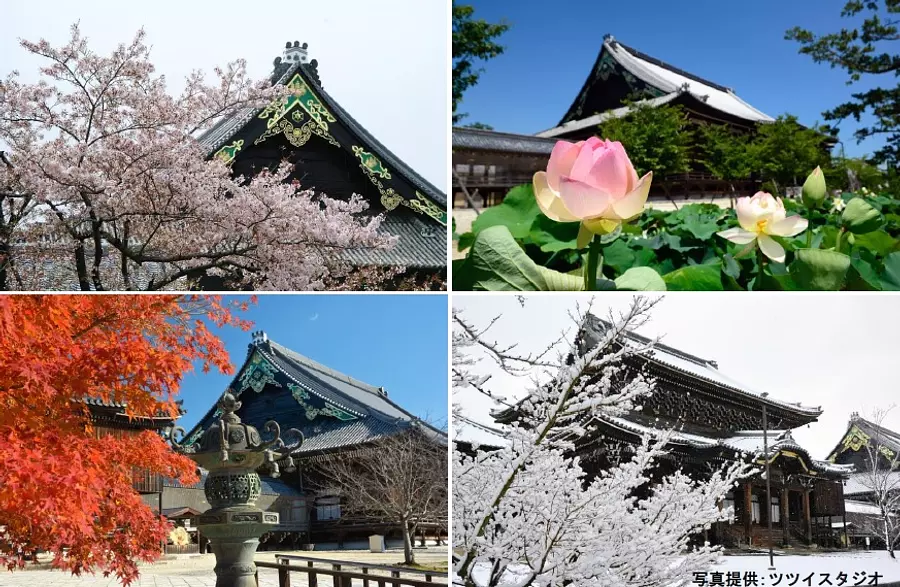
In addition, the seasonal atmosphere of the temple grounds is tasteful and attractive.
In the spring, you can enjoy colorful flowers such as cherry blossoms and wisteria, in the summer, you can enjoy the lotus flowers that are the symbol of SENJUJIHeadTempleoftheShinshuTakadaSchool, in the fall, you can enjoy the autumn leaves of ginkgo and maple trees, and in the winter, you can enjoy the snowy scenery.
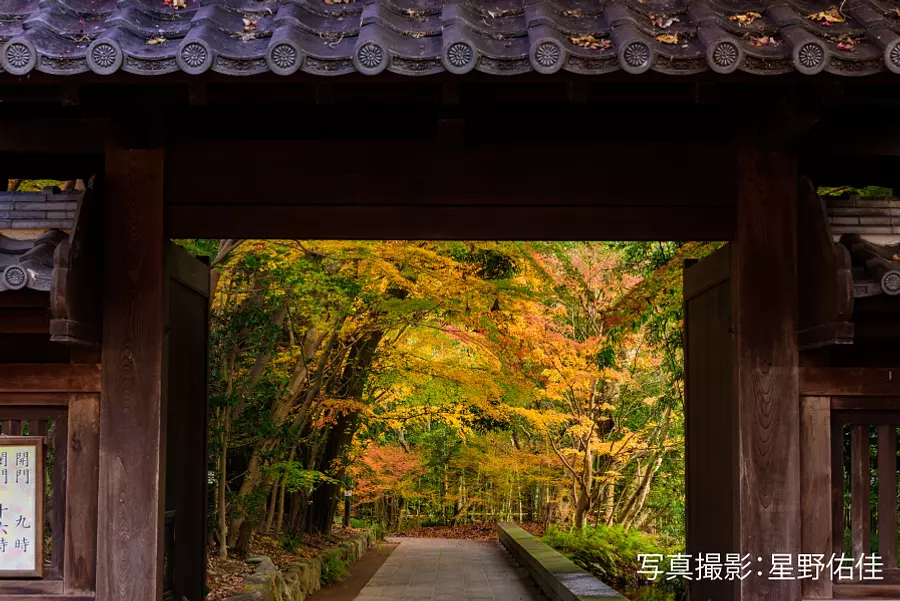
This photo was taken by famous female photographer Yuka Hoshino.
This photo of autumn leaves was taken from a small gate near the shrine chapel, and it has a very atmospheric feel.
One of the charms of SENJUJIHeadTempleoftheShinshuTakadaSchool is that there are many Instagrammable spots like this within the temple grounds.
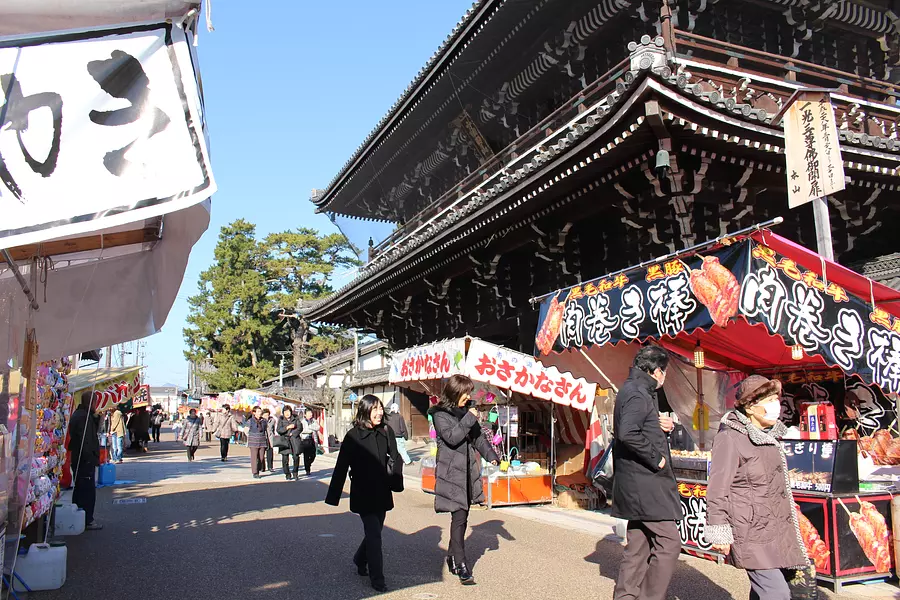
In winter, the major memorial service at Takada Honzan Senshuji Temple is the ``Oshichiya Hoonko,'' which is held for seven days and nights to honor Shinran Shonin, and is held from January 9th to 16th, and has become a winter tradition. I am.
Fondly known as ``Onanaya-san,'' the temple is lined with stalls in the temple town in front of the gate, and is visited by many people every year.
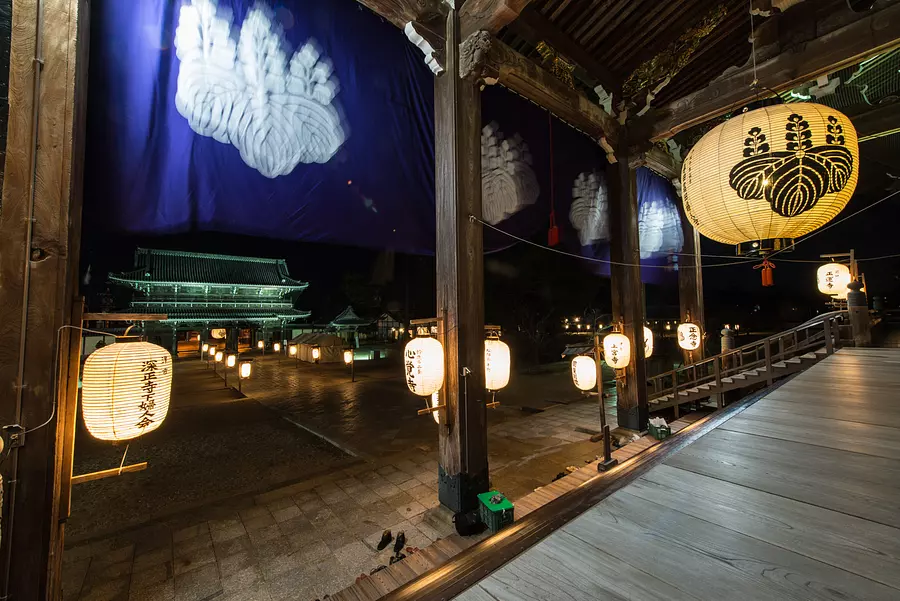
Only during the ``Onanaya-san'' period, you can see the precincts lit up with lanterns. You can enjoy a sophisticated atmosphere that is completely different from the daytime.
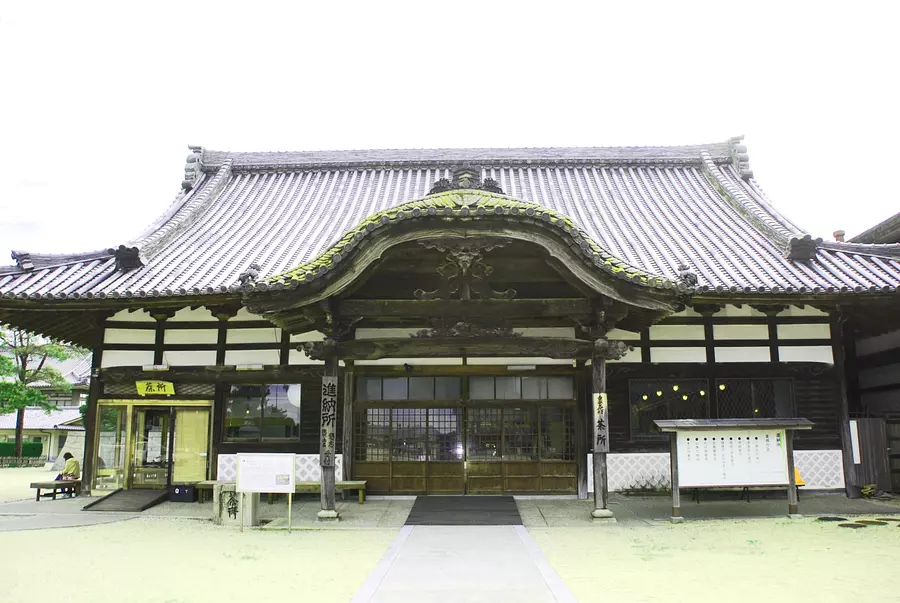
And don't forget the goshuin.
It is also fun to receive a goshuin stamp with the name of the temple written on it as a token of your visit. You can eat it at the Shinnosho on the right after entering from the Sanmon gate, so be sure to stop by.
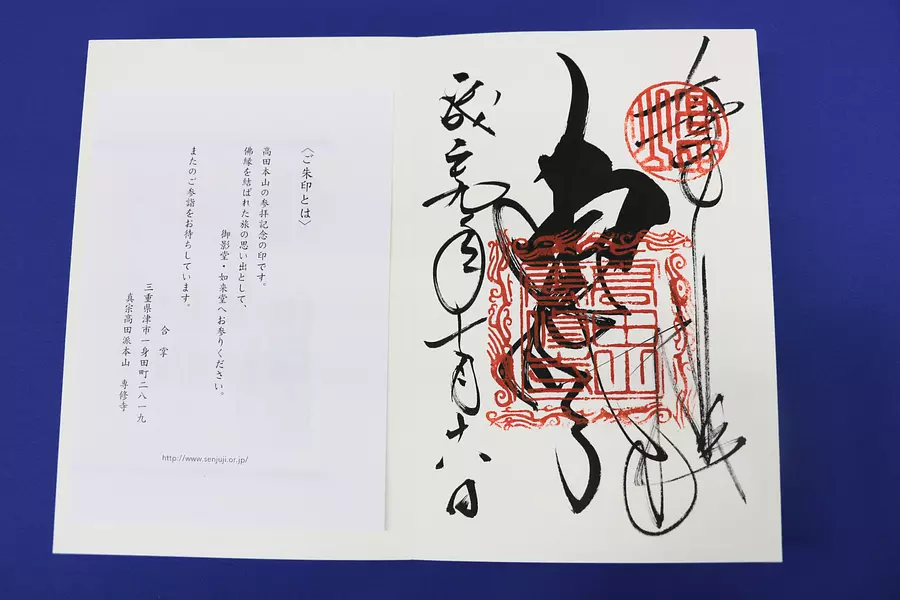
The goshuin was powerful and very skillful, and it made me feel tense.
Shinnosho also has a wide variety of original goshuin books, so you're sure to find something you like.
1 Goshuin stamp: 300 yen *If you purchase a Goshuin book, it will be included in the product price.
Reception hours: 9:00-16:00
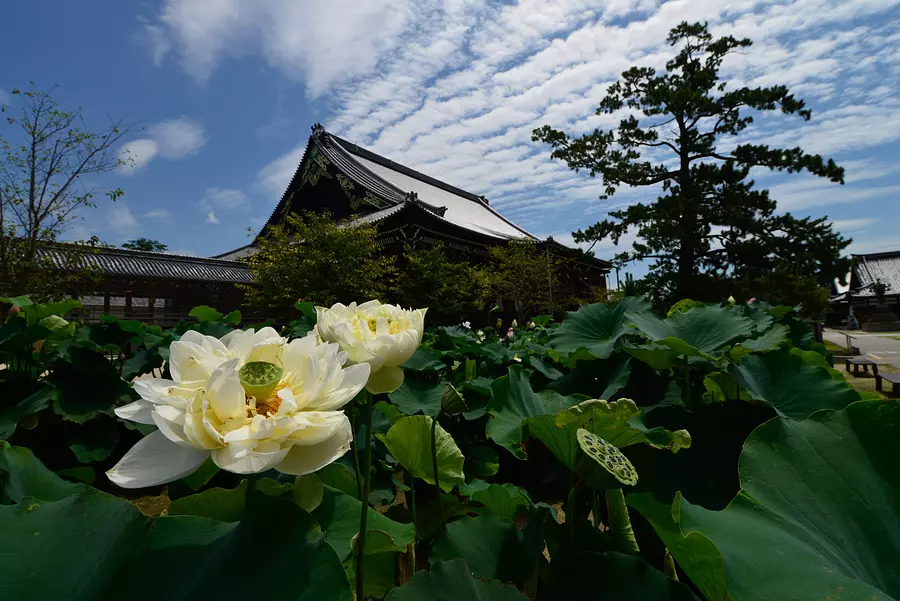
National Treasures are ``important cultural properties that have high value from the perspective of world culture and are unique treasures of the nation.'' When you actually see it, you will be able to experience with all five senses this ``unparalleled national treasure,'' so please come to SENJUJIHeadTempleoftheShinshuTakadaSchool.
[Youtube video]
[Model course information]
○Day trip course: National treasure! A day trip to SENJUJIHeadTempleoftheShinshuTakadaSchool
○1 night 2 day course (car): National treasure! A 1-night, 2-day historical walk around SENJUJIHeadTempleoftheShinshuTakadaSchool and the castle ruins!
○1 night 2 day course (public transportation): National treasure! A 1-night, 2-day trip to SENJUJIHeadTempleoftheShinshuTakadaSchool and IseJingu by public transportation
【inquiry】
Takada Honzan Senshuji Temple
〒514-0114
2819 Ichimida-cho, TsuCity City, isshinden Prefecture
Phone: 059-232-4171
FAX: 059-232-1414
HP: Official website “SENJUJIHeadTempleoftheShinshuTakadaSchool ”
【Traffic access】
・For public transportation
5 minutes walk from JR “isshinden Station”
20 minutes walk from Kintetsu "Takada Motoyama" station
15 minutes from JR/Kintetsu Tsu Station by bus bound for “isshinden” or “Mie Hospital” and get off at “Motoyama-mae” stop.
・Access by car
Approximately 15 minutes from Ise Expressway Tsu IC
Approximately 15 minutes from Ise Expressway Geino IC
Parking: Large parking lot (free, bus available) near JR isshinden Station.
[Admission fee] Free
[Surrounding tourist information]
○ Special feature on popular tourist spots in the Chunanse area of Mie Prefecture!
| Category | |
|---|---|
| season | |
| area |
Related spots
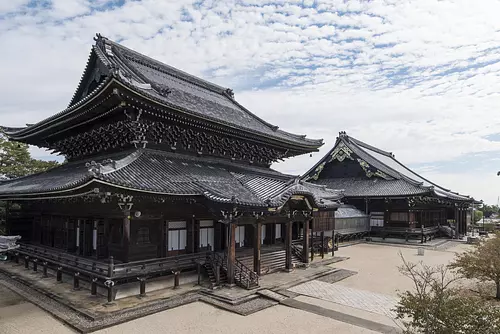
SENJUJIHeadTempleoftheShinshuTakadaSchool
Chunan group
TsuCityRegarding changes to events due to the spread of the new coronavirus infection Our mountain, affectionately known as Takada Honzan, is the head temple of the Shinshu sect of Buddhism held by Shinran Shonin. In addition to Mieido, which was designated as a national treasure in 2017 and is the fifth largest national treasure wooden structure, and Nyorai-do, which has a wonderful carving in the main hall, there are 11 buildings designated as nationally designated important cultural properties within the grounds of two Tokyo Domes. are lined up. Other national treasures and important cultural properties are located in the Treasure Museum. In addition, many lotus flowers are in full bloom in the summer. As you know from history class, Shinran Shonin was exiled to Echigo during the Nenbutsu suppression. Following his footsteps after that, he traveled around the Kanto region and returned to Kyoto. Its base in the Kanto region is Honji Senshuji, located in what is now Takada, Moka City, Tochigi Prefecture. After that, the head temple was moved to Ichimida-cho, TsuCity isshinden It became the origin of the current Takada Motoyama. This Shinshu Takada sect's main temple, Senshu-ji, has formed a temple town on the land of isshinden, and still carries on the Nenbutsu that was spread by Shinran Shonin. Founded: 1465
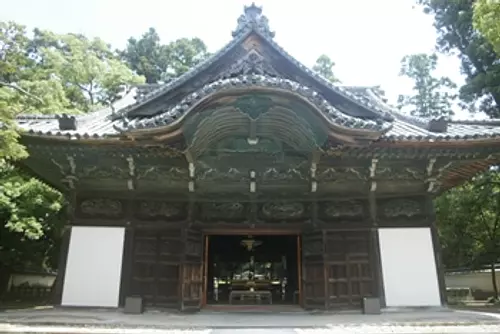
SENJUJIHeadTempleoftheShinshuTakadaSchool Mausoleum Hall and Karamon Gate
Chunan group
TsuCityOn the west side of Nyorai-do Hall, across a small stone bridge and passing through a moat, is the mausoleum of Shinran, the founder of Shinshu Buddhism. From the south, there is a Karamon gate, a hall of worship, and a stone bridge, followed by the tomb of Shinran Shonin, and surrounding it are the tombs of the successive chief priests of Senshu-ji Temple. The Karamon gate in front of the building was built in 1861, with a roof made of cypress bark, and every corner of the gate, between pillars, and doors are filled with carvings, making it look like a beautiful work of art. The transparent walls on the left and right sides were also built at the same time, and around the waist are carvings of flowers such as daffodils, lotuses, and dandelions. The hall of worship is believed to have been built in 1858, based on the inscriptions on the tiles, and has a staggered gable on four sides of the roof, and a kara gable on the front eave. The interior floor is laid with tiles with diagonal joints, so-called shihan-shiki. Shinran's tomb was built in 1671 by burying five of the saint's bones that had been handed down at Senshuji Temple. Prefectural building 2 buildings 1974/03/30 (S49) Edo Senshuji
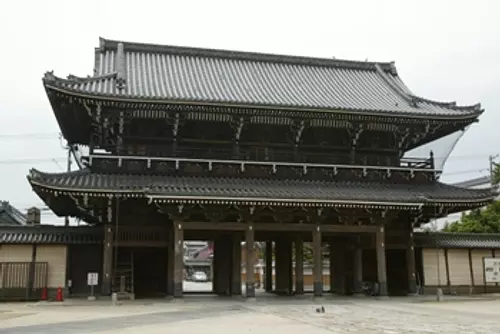
SENJUJIHeadTempleoftheShinshuTakadaSchool Temple Gate
Chunan group
TsuCitySenshu-ji Temple has three gates. These are Sanmon, Karamon, and Taikomon, and pilgrims mainly use Sanmon and Karamon. Sanmon is a two-story gate that stands in front of Mieido, and is the main gate of Senshuji Temple, and was built in 1704. The architectural techniques used in the details, such as sashi-hijiki (large Buddha-like), and the eaves in the back three spaces, making the rows of pillars look orderly, give it a very clean architecture. ing. Prefectural building 1 building 1960/05/17 (S35) Edo Senshuji
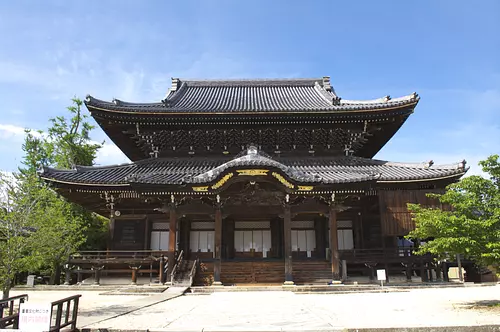
SENJUJIHeadTempleoftheShinshuTakadaSchool Nyorai-do Hall
Chunan group
TsuCityLocated to the west of Mieido, the principal image of Amida Nyorai, said to be the "Tathagata of Evidence," is enshrined on the Shumidan in the center, and on either side are statues of the Seven High Priests of the Pure Land. It is a hall that honors the statue of Prince Shotoku and his name with a nine-character cross. It was built in 1748. While Mieido is practically the center of worship, doctrinally speaking, this hall is the main hall of Senshuji Temple. The gabled roof has a mokoshi floor, giving it the appearance of a two-story building, and the front eaves have a kara gable, fan-shaped rafters under the eaves, and intricate dougong kumihimo, all in the style of Zen Buddhism. Techniques are used extensively. On the gable of the roof is a carved crane that is said to have been created by Jingoro Hidashi. Kokuken 1 building 1961/06/07 (S36) Edo Senshuji
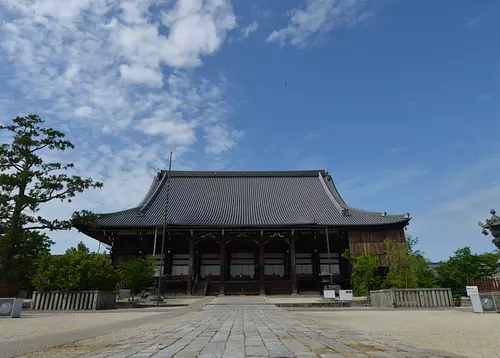
SENJUJIHeadTempleoftheShinshuTakadaSchool Temple Mieido
Chunan group
TsuCityWhen you enter the Sanmon gate of Senshu-ji Temple, you will see Mieido in front of you. It is the largest building at Senshuji Temple, and one of the largest in the country. It was rebuilt in 1666, with a wooden statue of the founder of the sect, Shinran, in the center, and images of successive monks on either side. The exterior is a simple, Japanese-style building with a gabled roof and wooden tile roof, with a three-room front porch, but once inside, you'll find pillars made of gold brocade, a richly colored ceiling, and a round carved transom. It is a collection of the best decorative techniques of the time. The palace where the statue of Shinran Shonin is enshrined was built in 1702 from the ridge plate, and is characterized by its ornate design decorated with gold leaf and richly colored carvings. Kokuken 1 building 1961/06/07 (S36) Edo Senshuji

